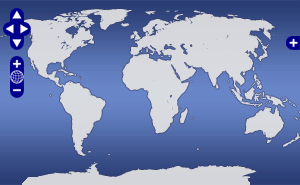Bathymetry data (GeoTIFF grid format) of the Northern-most Adriatic area: Interreg Ita-Slo 2007-2013 TRECORALA Project
In the framework of the Interreg Ita-Slo 2007-2013 TRECORALA Project, a two-year research and data collection campaign was performed (2012-2014). The purpose of the TRECORALA project was to broaden the biological knowledge of the "Trezze"/"Grebeni" and coralligenous seabeds of the Gulf of Trieste and to identify guidelines for the management, protection and enhancement of this natural environment, strengthening the attractiveness and competitiveness of the area and contributing to safeguarding biodiversity. Through the collected information on professional fishing activities, management proposals were made regarding some resources of particular commercial interest. As a final product, the project provided the necessary tools for the joint cross-border management of marine areas, also developing the tourism sector.This multidisciplinary study presents the major characteristics of a set of submarine rock outcrops in the Northern Adriatic Sea: the rock occurrence, embedded down to about 1 m from the seafloor in the bottom sediments; several gas accumulations in the proximity of the outcrops (e.g., bubbling gas from the sediment–water interface); small-scale mud volcanoes; and microbial mats around the seepage site. Geochemical analysis revealed that these features are related to the seepage of CH4-rich fluids, which causes the precipitation of methane-derived calcium carbonate as a cement. A variety of benthic specimens contributes to their growth, including bryozoans, molluscs, serpulid polychaetes, scleractinians and calcareous algae, the latter acting as the main bio-constructors. The site is characterized by the presence of localized coralligenous buildups, widespread along the northwestern Adriatic Sea inner shelf between depths of 10-27 m. These rocky build-ups rise to 3 m above the sandy-mud seafloor and have a patchy distribution. The study area was mapped using Reson SeaBat 7125 and 8125 multibeam systems to localize the rocky outcrops and to distinguish between soft and hard substrates. The multibeam surveys were conducted from a small boat, named Anthea, using differential GPS for navigation. Sea waves were not perfectly corrected by the inertial system. Here we present the maps of the main outcrops monitored in the Northern-most Adriatic area. The processed data files were gridded at 2 m resolution. The files are in GeoTIFF grid format, projected in the UTM33 WGS84 system.
Gordini, Emiliano
Investigator
OGS
Ciriaco, Saul
Investigator
WWF Italy Miramare MPA/Shoreline
Device Info
Sonar:
Reson:SeaBat 8125
Device Info
Sonar:
Reson:SeaBat 7125
Platform
NotProvided
Data DOI
Quality
2
The data have been processed/modified to a level beyond that of basic quality control (e.g. final processed sonar data, photo-mosaics).
License
Data Files
References
Data Citation Information
ISO/XML Metadata
Expand

 Map View
Map View
